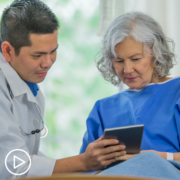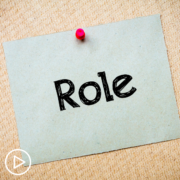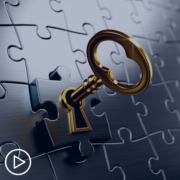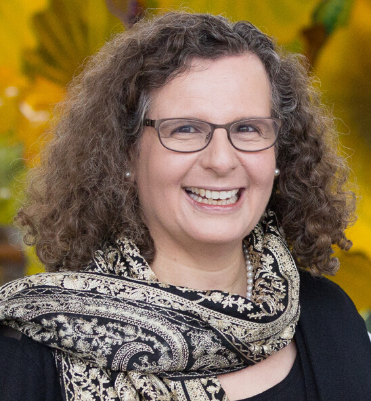The Best of 2020
As 2021 begins, we would like to take a moment to highlight a few of our most popular posts from 2020 and to thank the people who contributed to the popularity of these posts. We cannot thank the authors and organizations enough that have contributed to make 2020 one for the books, even during a trying year. Your efforts to Patient Empowerment Network are greatly appreciated!
January
Patient Profile: Perseverance and Positive Thinking Helped This Young Mother
Stage IIB Hodgkin Lymphoma patient, Lindsay, shares her cancer journey from searching for a diagnosis to adjusting to her new mantle of ‘cancer survivor’.
10 Body Signals Warning Health Problems
We should always be aware of what our body is trying to tell us. Here are ten ways our body is signaling that we should be more concerned with our health.
February
How Can You Best Support A Friend With Cancer?
What happens when someone close to you has been diagnosed with cancer? Here are some tips and advice to be the most helpful to cancer patients.
Confused About Immunotherapy and Its Side Effects? You Aren’t Alone
Patients need to be aware of the side effects of immunotherapy and vigilant in addressing them with their doctor as they can signal complications.
March
While this is naturally a worrying time, there are many things we can do to mind our mental health and boost our immunity and well-being at this time. In this blog, you will find tips to help you navigate your way through this time of global crisis.
Health Fraud Scam – Be Aware and Careful
This blog explains what healthcare fraud is and provides tips to help you avoid falling victim to these scams.
April
Cutting Through the Panic in a Pandemic
A list of trusted sources to help you cut through all the information that is being share online about the coronavirus pandemic.
Fact or Fiction: Finding Scientific Publications Infographic
This infographic from our PEN Powered Activity Guide shares her tips for finding and understanding scientific publications.
May
Cissy White gets used to her new normal dealing with having ovarian cancer during a pandemic, and the challenges and benefits that presents.
Diversity in Clinical Trials Benefits Everyone
It is critical that minority groups are included in clinical trials because, as the broader population, their data will affect the outcome of precision medicine for everyone.
June
Social Determinants of Hope
Casey Quinlan explains that everyone’s social determinants of health have been impacted by COVID19, but she is seeing strong signals of hope.
Music as Medicine: The Healing Power of Music
For cancer patients, music can be a powerful therapeutic tool in coping with a cancer diagnosis and treatment. Here is a list of some crowd favorites.
July
Dealing with a Cancer Diagnosis During COVID-19
There’s never a good time for a cancer diagnosis, especially during a global pandemic. Here are some recommendations from cancer treatment experts.
Quotation Inspiration: 10 Quotes to Inspire, Motivate and Uplift Cancer Patients
A list of 10 quotes and messages of hope and inspiration from patients that can bring you that much needed boost in your day.
August
Turning Your Home Into a Sanctuary
These days we are spending more time at home, so you need to feel like your happy place. Turn your home in a sanctuary in 5 simple steps.
Oncology Social Worker Checklist
Oncology Social Worker, Sara Goldberger, MSSW, LCSW-R, shares her checklist for resiliency during the time of a global pandemic.
September
The Nitty Gritty on Care Partnering
Casey Quinlan provides a short checklist that can be used in any patient-with-a-bedside-care-partner situation.
Are Cancer Survivors More Susceptible To Respiratory Illnesses When Air Quality Is Poor?
A recent study published examines the connection between air pollution and respiratory health among cancer survivors.
October
In this Part 2, we’ll look at the role of peer to empowerment and explore whether the term “empowerment” is even the right term to use.
The Power of Journaling During Cancer Treatment
This article is meant to help cancer patients understand just how much journaling can help them emotionally and physically during their treatments.
November
The Caregiver Impact: A Vital Part of Healthcare
Network Managers, Carly Flumer and Sherea Cary, team up to discuss the importance caregivers and some quick tips for caregivers.
5 Ways a Patient Portal Can Improve Your Health Care Experience
This blog shares 5 helpful tips for utilizing your patient portal to the fullest.
December
“Wait, There’s a Good Cancer?”
Carly Flumer shares her thyroid cancer diagnosis story and what it’s like being told you have the “good” cancer.
Chronic Myeloid Leukemia (CML) Patient Profile
A patient story from a chronic myeloid or myelogenous leukemia (CML), an uncommon cancer of the bone marrow, patient.
















